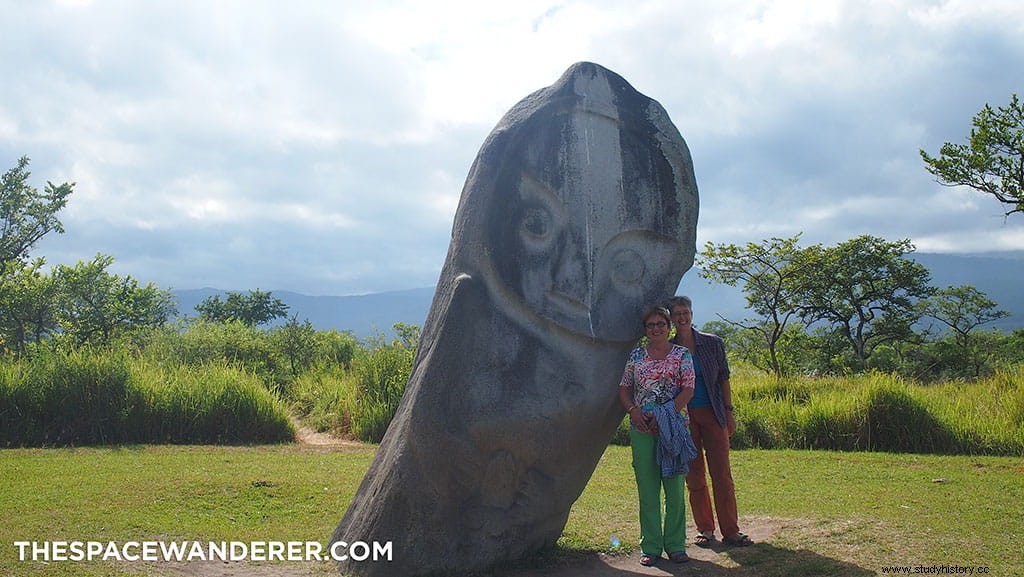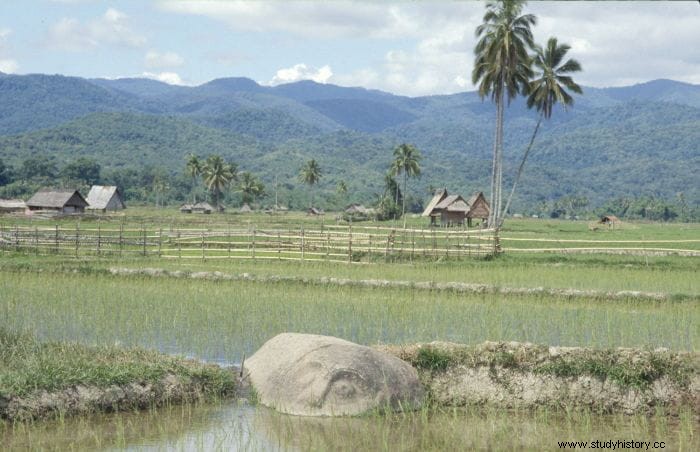The Bada Valley is located in the Poso district on the island of Sulawesi, Indonesia, within the Lore Lindu National Park. Its main attraction is the more than 400 megalithic sculptures scattered throughout the place, 30 of which have anthropomorphic representations , which some compare to the moai of Pacua Island.
They were discovered for Western archeology in 1908, although locally they are documented at least since the 14th century. There are dozens of sculptures whose usefulness or use is unknown, and whose dating covers a time span that goes from 1,000 to 5,000 years old. They would therefore be at least 500 years older than the first moai on Easter Island.

Some researchers believe that they are related to the megalithic culture of Laos, Cambodia and areas of Indonesia, where different examples of megaliths have appeared. However, those of the Bada Valley are unique in all of Southeast Asia due to their morphology.
Local legends associate them with ancestor worship, but also with sacrificial rites and even myths of petrification of criminals and looters in very ancient times. Still today some locals believe that the stones have supernatural powers and are capable of moving on their own.

There are both male and female sculptures, differentiated by the representation of the genitals and facial features, such as long hair in women. Other sculptures are minimalist, with faces indicated by a simple line for eyebrows, cheeks, and chin. And the least represent animals. The ones that represent humans have huge heads with round eyes and straight bodies, and almost all of them are fallen and half buried on the banks of rivers or in the middle of the field.
Most of them are alone, with a small number that are distributed in groups, and some reach up to 4 meters and a half tall.
Another type of megalithic sculptures present in the valley are the Kalamba , a kind of stone carved jars with a diameter of 1.5 to 2 meters, whose function is also not very clear. It is believed that they could be tombs or serve to collect water. There are up to 50 of these intact pieces scattered throughout the valley, and they may be related to the also unusual jars from Laos.
The most famous and well-known are the so-called Palindo (the animator ) and Langke Bulawa (golden bracelet ). The first is the largest of all found, more than 4 meters tall and oval in shape, with bulging eyes, a large nose and a mouth that seems to smile. The second reaches 1.8 meters in height and is a female figure.

What most intrigues archaeologists is that no settlement remains, artifacts, burials or tools, or any other evidence of the culture that produced the megaliths, have so far turned up in the valley.
